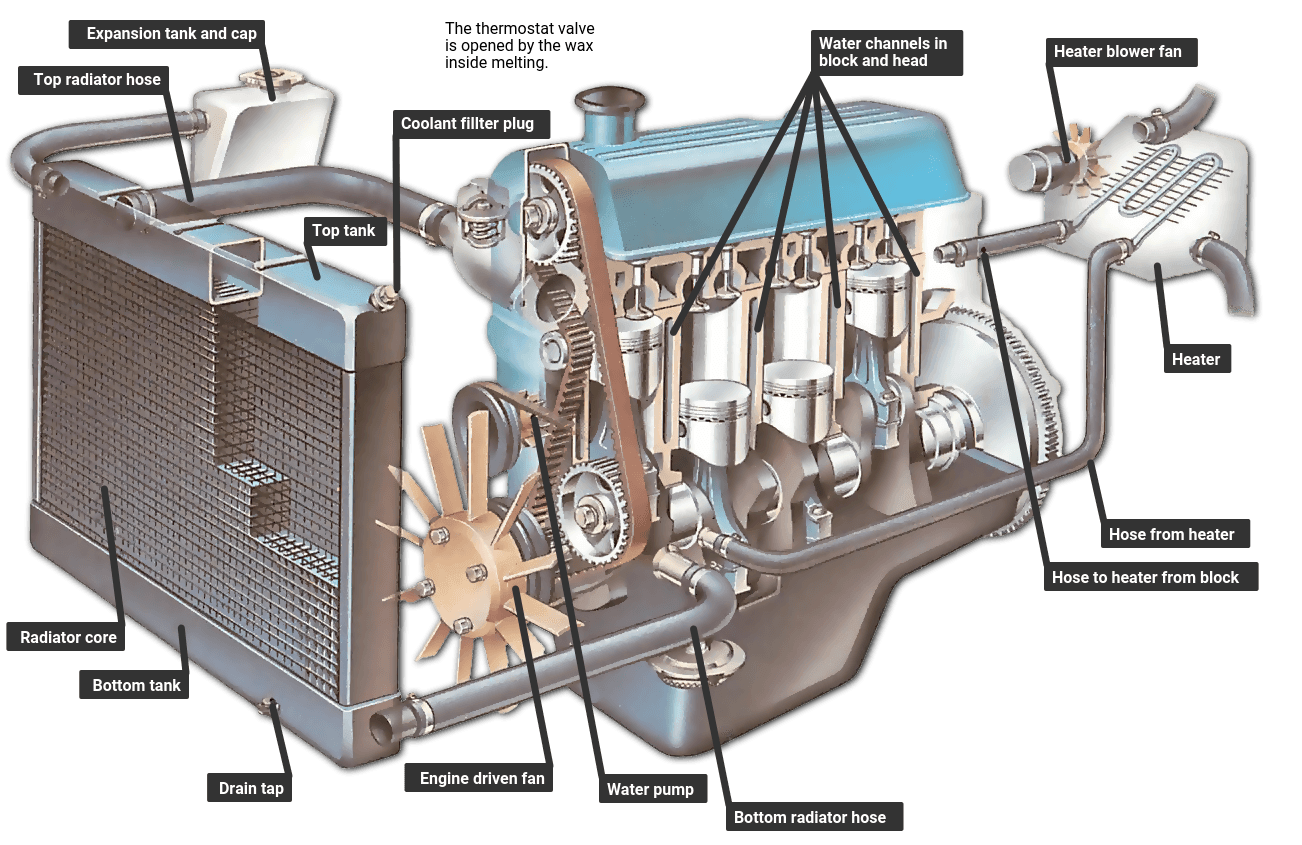How Do Car Engines Keep Cool?
Car engines generate a lot of heat, and if this heat is not dissipated, it can cause the engine to overheat and fail. To prevent this, car engines are equipped with a cooling system that helps to keep the engine operating at a safe temperature.
How Does a Car Cooling System Work?
The car cooling system is a complex system that involves several components, including:
- Radiator: The radiator is a heat exchanger that helps to cool the engine coolant. It is typically located at the front of the car, where it can receive airflow from the outside.
- Water pump: The water pump circulates the engine coolant through the cooling system. It is driven by the engine’s camshaft or crankshaft.
- Thermostat: The thermostat regulates the flow of coolant through the cooling system. It opens when the engine coolant reaches a certain temperature, allowing coolant to flow through the radiator.
- Coolant hoses: The coolant hoses connect the various components of the cooling system. They are typically made of rubber or silicone.
When the engine is running, the water pump circulates the engine coolant through the cooling system. The coolant absorbs heat from the engine and carries it to the radiator. The radiator then dissipates the heat into the outside air. The thermostat regulates the flow of coolant through the cooling system, ensuring that the engine coolant reaches the optimal temperature for efficient operation.
What Are the Different Types of Car Cooling Systems?
There are two main types of car cooling systems:
- Liquid-cooled systems: Liquid-cooled systems use engine coolant to absorb heat from the engine. The coolant is circulated through the cooling system by a water pump.
- Air-cooled systems: Air-cooled systems use air to absorb heat from the engine. The air is circulated over the engine by a fan.
Liquid-cooled systems are more common in modern cars because they are more efficient at dissipating heat. However, air-cooled systems are still used in some cars, such as the Volkswagen Beetle and the Porsche 911.
What Are the Signs of an Overheating Engine?
If your car engine overheats, you may notice the following symptoms:
- High engine temperature gauge: The engine temperature gauge will read in the red zone.
- Steam coming from the engine: You may see steam coming from the engine compartment.
- Loss of power: The engine may lose power or stall.
- Knocking or pinging noises: You may hear knocking or pinging noises coming from the engine.
If you notice any of these symptoms, pull over to a safe location and turn off the engine. Allow the engine to cool down for a few minutes before checking the coolant level. If the coolant level is low, add more coolant and check for leaks. If the coolant level is full, the overheating may be caused by a more serious problem, such as a faulty thermostat or water pump. In this case, it is best to have the car towed to a mechanic for diagnosis and repair.
How Can I Prevent My Car Engine from Overheating?
There are a few things you can do to prevent your car engine from overheating:
- Check the coolant level regularly: The coolant level should be checked at least once a month. If the coolant level is low, add more coolant and check for leaks.
- Replace the thermostat regularly: The thermostat should be replaced every 5 years or 60,000 miles. A faulty thermostat can cause the engine to overheat.
- Keep the radiator clean: The radiator should be cleaned at least once a year. A dirty radiator can restrict airflow and cause the engine to overheat.
- Avoid driving in extreme heat: If possible, avoid driving in extreme heat. If you must drive in extreme heat, be sure to keep an eye on the engine temperature gauge and take breaks to allow the engine to cool down.
By following these tips, you can help to prevent your car engine from overheating and keep it running smoothly for years to come.





